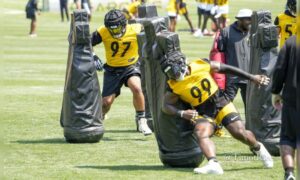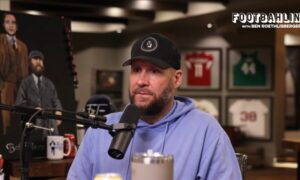When Pittsburgh Steelers general manager Kevin Colbert said earlier this offseason that it was doubtful the organization would use either the franchise tag or the transition tag this year, he said it not knowing that the salary cap situation would be much more favorable than was expected.
Likewise, he recently said that the Steelers would be more open to trading down in this upcoming draft than trading up.
Perhaps that rationale could be influenced by the news of the Steelers’ compensatory selections, which came in a bit less conservatively than anticipated, with additional draft picks coming in the third, fifth, and sixth rounds of the upcoming draft.
Obviously, compensatory picks cannot be traded themselves. However, having those picks at your disposal could make one more prone to maneuvering than with the understanding of having a flat seven standard picks.
In 2012, for example, with an extra three picks in the seventh round, the Steelers traded away a sixth-round pick in order to move up in the fourth round to draft nose tackle Alameda Ta’amu.
Of course, that specific move didn’t work out, but it is an example of what the comfort of extra picks can allow one to do.
Since the Steelers traded away their third-round pick in the coming draft last year, for example, perhaps Colbert and company would be interested in trying to recoup that pick by trading a pair of picks in the later rounds.
That would give the Steelers four of the top 97 picks in what Colbert has described as the deepest class in decades. And deeper classes translate to a higher overall value per selection in comparison to other draft.
Compare the defensive end class of the 2009 and 2011 drafts. With the 32nd overall pick in 2009, the Steelers selected Ziggy Hood, whom the Steelers made no effort to offer a second contract.
In 2011, with the 31st overall pick, the Steelers selected Cameron Heyward, who is a prime extension candidate during training camp.
Having more, and higher, picks than anticipated, of course, provides greater flexibility, and that flexibility applies to both moving up and moving down.
While acquiring a higher number of premium picks in a deep draft is one strategy, acquiring a higher number of total picks in said draft is also highly tempting.
And as Colbert said, before this announcement, the feeling was that he would be more inclined to move down. Finding the balance between quality and volume in a deep draft is key.







